

LETTER FROM THE PRESIDENT
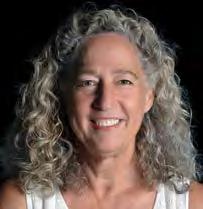
Fueled by the dedication of our community, we made real progress this year advancing the science, technology, and partnerships that drive our mission and make discovery possible. We are especially grateful to our Leadership Circle—Laurie Girand and Scott McGregor, the William K. Bowes, Jr. Foundation, Alison and Steve Krausz, Maryann and John Montrym, Tito’s CHEERS, and Google Cloud— whose continued generosity drives our work ahead.
With a committed team of engineers now firmly in place for three years, the Asteroid Institute has begun to turn long-held goals into reality. Chief among these was the launch of the Asteroid Discovery Analysis and Mapping (ADAM) online platform—enabling easy access to our current tools. This milestone was strengthened through the addition of two new services: ADAM::Trajectory, which calculates flight paths and propulsion requirements between any two solar system objects, and ADAM::Impact Probability, which assesses the likelihood of an object impacting Earth or the Moon. Read more about these advances on pages 8–9.
Throughout the year, our engineers participated in conferences and outreach events, sharing our work and expanding awareness of ADAM across the scientific community. In April, our team convened in Seattle for a week-long hackathon, where they built the groundwork for the ADAM::Trajectory tool. That week, University of Washington graduate Dr. Joachim Moeyens and our Head of Software Engineering Alec Koumjian presented the Asteroid Institute’s open-source software packages to members of the LSST Interdisciplinary Network for Collaboration and Computing (LINCC). Later in the spring, we again sponsored the Planetary Defense Conference (PDC), as we have since its inception, and Software Engineer Kathleen Kiker presented new research on risk assessment in the Rubin Observatory era (see page 10). These efforts not only advance our tools but also ensure they evolve in step with the broader community.
On June 30, as part of Asteroid Day programming hosted by Lowell Observatory and Meteor Crater in Flagstaff, we awarded the second Schweickart Prize to a remarkable team of graduate students whose work reflects the complexity of planetary defense in the modern age. Led by Jordan Stone of Imperial College London, the proposal outlines a case and structure for a global coordination body to address the risks of unintentionally altering asteroid orbits through mining, science missions, or spacecraft anomalies. Their vision—blending technical modeling, ethical foresight, and international policy frameworks—is exactly the kind of thinking the Schweickart Prize was created to uplift. Learn more on pages 14–15.
Asteroid Day celebrated its tenth anniversary this year, an initiative I cofounded with Rusty Schweickart, Dr. Brian May, and Grig Richters to ignite global public engagement around asteroids. What began as a grassroots effort has become a UN-recognized event celebrated on nearly every continent. In early summer, a U.S. Senate resolution was introduced to recognize June 30 as Asteroid Day, underscoring how far this movement has come and what is possible when scientists, educators, policymakers, and the public work together. See pages 16–17 for more.
One of the definitive markers of B612’s long-term legacy is the continued growth of those who have been part of our community. From interns to prize winners, these individuals are emerging as scientists, engineers, communicators, and leaders—each carrying forward the inspiration, skills, and sense of purpose cultivated during their time with B612. Whether working on asteroid modeling, contributing to space missions, or advancing science communication, they remind us why investing in people is just as important as investing in technology. Find out where some of these individuals are today on pages 20–21.
Having witnessed the breathtaking beauty and dangers of space, I deeply appreciate the Asteroid Institute’s mission. The Institute’s efforts are vital for protecting our home planet and enhancing our understanding of the solar system and beyond.
STEVE SMITH FORMER NASA ASTRONAUT, DIPLOMAT
This year’s accomplishments are a reflection of our team’s talent, persistence, and shared mission—and none of it would be possible without the continued support of our board of directors, donors, advisors, and partners. Thank you for helping us turn our bold vision into tangible results and real progress in our mission to explore and navigate our solar system.
Looking ahead,

Danica Remy President, B612 Foundation Cofounder, Asteroid Day
ABOUT ASTEROID INSTI TUTE
Since 2002, B612 Foundation has engaged in research, education, and advocacy to advance our understanding of the solar system’s evolution, expand economic development in space, and protect our home planet from asteroid impacts.
Asteroid Institute, our flagship program, brings together scientists, researchers, and engineers to utilize the latest advances in computing and astronomy to build open tools that allow us to better understand, map, and navigate our solar system
ASTEROID EDUCATION
Our Asteroid Education programs help build the knowledge, skills, and readiness needed for humanity’s shared future in space. Through initiatives such as the Schweickart Prize, the Asteroid Institute Fellows program, and public events, our community of experts educates, inspires, and mentors the next generation of STEM leaders.
Our progress is made possible by the generous contributions of our Leadership, Founding, and Asteroid Circle members, along with individual donors from 46 countries worldwide.

IN THE LAST YEAR
The Asteroid Discovery Analysis and Mapping (ADAM) Platform
The new ADAM Platform online brings together our most powerful open-source tools—impact probability, trajectory optimization, and real-time discovery—in one easily accessible interface. Learn how these capabilities are accelerating research and enabling the mapping of our solar system on pages 8–9.
Vera C. Rubin Using Asteroid Institute Tools
Rubin Observatory will be using ADAM::Impact to test whether newly discovered objects pose a risk of Earth impact. By running early detections through our Monte Carlo–based risk-assessment engine, the Rubin team can rapidly flag potential impactors for follow-up. Read more about ADAM::Impact on page 10.
Hackathons
The Asteroid Institute team met in Seattle to collaborate with partners at the University of Washington’s DiRAC Institute. The visit aligned with the LSST Interdisciplinary Network for Collaboration and Computing (LINCC) workshop, where our engineering team shared open-source tools that support the community’s work. Over four days, the hackathon produced a prototype that became the ADAM::Trajectory service
A Decade of Asteroid Education
In 2015, B612 produced the first Asteroid Day program and global broadcast in San Francisco. A decade later, independently organized educational events are now held on nearly every continent. With the U.S. Senate’s resolution officially recognizing June 30 as Asteroid Day, cofounder Danica Remy reflects on how the initiative has grown beyond expectations and the lives it has touched. See pages 16–17 for the full story.
Schweickart Prize
In June, Apollo astronaut Rusty Schweickart presented the 2025 Schweickart Prize in Flagstaff, Arizona, during the Asteroid Day programming at Lowell Observatory and Meteor Crater. Now in its second year of recognizing student work, the prize was awarded to a team of students whose proposal addressed the policy and economic dimensions of planetary defense. Read more on page 15.
Asteroid Institute team at the Seattle Hackathon. (Left to right) Delphine Veronese-Milin, Alec Koumjian, Joachim Moeyens, Ed Lu, Danica Remy, Nate Tellis, Kathleen Kiker, Colleen Fiaschetti
ASTEROID INSTI TUTE
LETTER FROM THE EXECUTIVE DIRECTOR
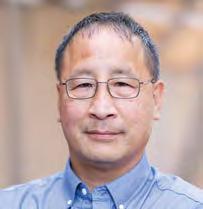
The Asteroid Institute continues to be on the best course for accelerating the mapping of the solar system and protecting Earth from asteroid impacts. This past year has underscored the growing importance of the analytic tools we are building through the Asteroid Discovery Analysis and Mapping (ADAM) platform.
In January, asteroid 2024 YR4 briefly made headlines with a reported 4.3% chance of striking Earth in 2032. The Asteroid Institute played a leading role in explaining how that probability was determined, using our open-source risk assessment tools and sharing impact maps with the public. Later observations ruled out an Earth collision, though a small chance of a lunar impact remains. More to come on this story!
The Rubin Observatory also released preliminary results confirming it will soon become the most powerful facility for asteroid discovery ever built. Rubin scientists will be using ADAM to identify and assess potential threats, and we are eager to apply our Trackletless Heliospheric Orbit Recovery (THOR) algorithm to expand the number of asteroids Rubin will uncover.
What else have we accomplished this year? We processed vast datasets of moving objects, built a live copy of the full Minor Planet catalog for easier access, launched a trajectory optimizer to map optimal paths between solar system bodies, and made all these tools available at b612.ai and through the new ADAM Dashboard.
With more than 5,000 satellites expected to launch this year, space development is accelerating rapidly. Meeting this challenge requires advanced mapping algorithms and broad access to data.
So thank you to our donors and partners! You are helping build the tools that will help us develop our solar system, and which will eventually help us protect the earth from asteroid impacts!

Dr. Ed Lu
Executive Director, Asteroid Institute
THE ADAM PLATFORM
Developed by the Asteroid Institute, the open-source Asteroid Discovery Analysis and Mapping (ADAM) platform enables large-scale analysis on a comprehensive catalog of astronomical datasets. Powered by Google Cloud, ADAM integrates live and historical data from multiple surveys, creating a reliable, dynamic map of known moving objects in our solar system.
Components and Users
In building ADAM and engaging with its early users, we’ve mapped how our tools and services could support tasks ranging from mission target selection to asteroid discovery and confirmation. As the platform evolves, new components will expand its applications and broaden the community it serves.
ADAM COMPONENTS USE CASES STAKEHOLDERS
Astrodynamics Services
Astrodynamics Open-source Tools
Astronomical Datasets
Arc Extension
Solar System Mapping
Automated MPC Submissions
Automated Discovery
Impact Risk
THE EVOLUTION OF ADAM
By Alec Koumjian
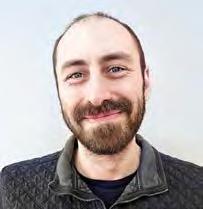
The past year has seen the Asteroid Discovery Analysis and Mapping (ADAM) platform expand in both scope and depth, marking an important step in making advanced asteroid science tools accessible to the public. Built on Google Cloud, ADAM combines curated datasets—8.6 billion point sources—and cloud-based services to create the infrastructure for discovery, analysis, and mission design.
One of the most significant additions this year has been the release of the Minor Planet Center’s (MPC) BigQuery Replica, accessible through the mpcq Python client. This release mirrors the MPC’s core holdings (including observations, orbits, and submission history) in a managed, query-optimized environment. By leveraging BigQuery’s scalable architecture, researchers can run sophisticated queries without downloading massive datasets or maintaining infrastructure, greatly lowering the barrier to entry for working with the MPC catalog.
The ADAM platform now hosts public exports of Rubin Observatory observations submitted to the MPC. This data, available in CSV, Parquet, and SQLite formats, is partitioned daily and offered as full snapshots. The datasets were created in response to requests from the LSST Solar System Science Collaboration members seeking reliable and open access to this stream of data, ensuring Rubin’s contributions can be integrated quickly into both large-scale discovery pipelines and smaller research projects.
Alongside new datasets, Asteroid Institute launched the ADAM Dashboard at b612.ai, which provides access to three services: Precovery, Impact Probability, and the newly launched Trajectory Optimizer. The console supports both a web interface and an API for integration into external pipelines. This combination of accessible web tools and programmable infrastructure is poised to become a key feature of ADAM’s growth.
Precovery remains a cornerstone, enabling searches of historical sky surveys for prediscovery detections of known objects. By extending observational arcs and improving orbit solutions, it demonstrates the direct benefits of cloud-scale computing for asteroid science.
In May 2025, we launched ADAM::Impact Probability, a service that allows researchers and students to explore asteroid risk scenarios using Monte Carlo analysis. The
service offers interactive visualizations and downloadable results for objects from JPL SBDB, ESA NEOCC, or JPL Scout. This capability underscores the practical value of transparent, reproducible impact monitoring.
In July, we introduced the ADAM::Trajectory Optimizer, which extends ADAM into mission design. By solving Lambert’s problem across user-defined time windows, the service produces porkchop plots and interactive visualizations of launch opportunities and transfer costs. Early reception from professional space mission planners has been very positive, especially regarding ease of data access.
Asteroid resources mark a vast new frontier that is growing more accessible. As evidence of this, ADAM trajectory gives us rapid, iterative mission design once reserved for large agencies.
DAYNAN CRULL COFOUNDER AND MISSION ARCHITECT, KARMAN+
Underlying these services is a strong commitment to open-source. Much of ADAM is built on publicly available libraries for astrodynamics, available on GitHub. By keeping the foundation of ADAM open, we foster transparency, encourage community contributions, and allow others to build on the same tools that power our cloud services.
Looking ahead, we plan to expand further with core dynamics functions such as propagation and ephemeris generation, reinforcing ADAM as a hub where datasets, services, and open software converge to support discovery, risk analysis, and mission design—at the scale of modern cloud infrastructure.
About Alec
Alec Koumjian is the Head of Software Engineering. With a dual degree in Computer Science and Physics from Marlboro College, he has over a decade of experience with writing software and leading teams across diverse industries, including machine learning. His technical background includes building scalable APIs, job systems, vector-based search engines, and code performance analysis in addition to frontend development.
OPEN SOFTWARE FOR IMPACT DETECTION
In late December 2024, the NASA-funded ATLAS survey spotted a previously unknown asteroid, 2024 YR4, with more than a 1% chance of impacting Earth. The discovery quickly made headlines as telescopes worldwide raced to refine its probability. For Asteroid Institute, YR4 offered a timely test.
In the months leading up to the discovery, our team had already developed a series of open-source tools for impact-risk assessment. These tools were immediately put to use. As new observations arrived, we generated Monte Carlo–based impact estimates and risk-corridor maps that closely matched figures from JPL and ESA. Within an hour of the MPC posting updated measurements, we were the first to identify that the impact risk had shifted from Earth to the Moon. At the same time, our Precovery service retrieved archival observations to extend the arc and refine orbit solutions.
Through coordinated efforts worldwide, it was soon determined that asteroid 2024 YR4 no longer posed a significant threat. Still, this real-world test accelerated development of our impact-assessment tools and informed our broader research agenda.
At the 9th IAA Planetary Defense Conference, Asteroid Institute engineer Kathleen Kiker used synthetic data to demonstrate how these tools can support impact-risk modeling. We focused on how much warning time Rubin Observatory could provide for imminent impactors. Simulations yielded two notable findings: many impactors would be detected only on final approach—months to days before impact—when speed and independent verification matter most. And Rubin alone could not provide sufficient warning for all threats, detecting only about half of Earth impactors 140 meters or smaller.
Rubin’s efforts are strengthened by the Asteroid Institute’s open-source work, which offers the community reliable, scalable tools for asteroid science.
DR.
ŽELJKO IVEZIĆ DIRECTOR, RUBIN OBSERVATORY
Building on this work, the impact-probability code will be trialed directly within Rubin’s discovery pipeline. Integrating this capability means that new discoveries can be automatically assessed for impact potential in near real-time—an essential step toward identifying imminent threats quickly and reliably.
By making our methods and results open-source, we ensure transparency and provide the community with a critical planetary-defense toolkit. Looking ahead, we will continue advancing discovery and tracking tools to strengthen global readiness.
ASTEROID
DISCOVERY PROGRESS
Asteroid Institute discoveries compared to Minor Planet Center recorded discoveries. Each year includes both main belt and near-Earth asteroids as well as other minor planets.
†New discoveries from the Asteroid Institute are anticipated in 2025, after the release of this report.
GLOBAL
NEAR-EARTH ASTEROID DISCOVERY PROGRESS *
More than 99% of the asteroids large enough to destroy a city (like the Tunguska asteroid) remain untracked.
PROGRAM EVOLUTION

2002
B612 founded with the goal of finding technical solutions for asteroid deflection.
2004–2008
B612 leads the Apophis debate.
2005
B612 announces invention of gravity tractor in Nature
2008
B612 funds design study at JPL showing feasibility of the gravity tractor.
2009
B612 sponsors first official International Academy of Astronautics (IAA) Planetary Defense Conference (PDC).

2012–2013
Dr. Ed Lu speaks at the U.S. Senate Committee on Commerce, Science, and Transportation hearing on space-borne threats to human civilization.
B612 announces the Sentinel Space Telescope project.
Open letter sent to NASA about deflection mission planning and the potential impact of asteroid 2011 AG5.
2014–2015
B612 is lead Founding Partner of Asteroid Day, a global asteroid-awareness campaign.
Asteroid Day holds 150 events worldwide.
B612 funds a Caltech research study validating the feasibility of synthetic tracking.

2016
B612 begins the Asteroid Discovery Analysis and Mapping (ADAM) project.
Asteroid Day is recognized by the United Nations and holds 500 events worldwide.
B612 endorses NEOCam and LSST for 100 M+ solution and discontinues fundraising for Sentinel project.
2017
Asteroid Institute launches with a focus on developing analytical tools for asteroid defense using ADAM.
Asteroid Day moves to Luxembourg and streams a 24hour global broadcast.
B612 publishes a call for shared solar system map in the Financial Times.
ASE NEO COMMITTEE
2005
Congress passes the George E. Brown, Jr. Near-Earth Object Survey Act, directing NASA to find 90% of asteroids larger than 140 meters.
Association of Space Explorers forms its committee on near-Earth objects (ASE NEO Committee).
2009
ASE NEO Committee submits Asteroid Threats: A Call for Global Response to UN COPUOS, recommending creation of international coordination mechanisms.
2012–15
A 19-meter meteor explodes over Chelyabinsk, Russia, injuring more than 1,500 people and damaging thousands of buildings across six cities.
Building on ASE recommendations, UN establishes the International Asteroid Warning Network (IAWN) under COPUOS.
JAXA launches the Hayabusa2 mission.
Construction begins on the Large Synoptic Survey Telescope (LSST).

2018
B612 launches the Asteroid Institute Fellows Program.
Asteroid Institute announces Google and AGI as technology partners for ADAM.
Asteroid Day hosts over 2,000 events worldwide and streams a 48-hour global broadcast.
Asteroid Institute publishes synthetic tracking results as a NASA technical report.
ASTEROID DAY
2016
NASA establishes the Planetary Defense Coordination Office.
NASA launches the OSIRISREx mission to asteroid Bennu.
2017
ESA and NASA almost fund the joint Asteroid Impact and Deflection Assessment (AIDA) mission.
NASA funds the Double Asteroid Redirection Test (DART), the first planetary defense mission.
2018
Pew Research Center reports that Americans view asteroid monitoring as a national priority.
United Nations Office for Outer Space Affairs (UNOOSA) publishes the Planetary Defence Report.
Hayabusa2 spacecraft surveys asteroid Ryugu.
2019
Asteroid Institute presents research on deflection impulses to move asteroids at 6th IAA PDC.
Asteroid Day celebrates its 5th anniversary with a 21-day global broadcast.
B612 launches ADAM Engineer Funding campaign.
2020
Asteroid Institute’s paper, “Required deflection impulses as a function of time before impact for Earth-impacting asteroids,” published in Icarus ADAM engineering team hired.
2021
Open-source code THOR is released and published in The Astronomical Journal
Asteroid Institute presents on characterizing the population of NEOs expected in the first year of LSST operations at 7th IAA PDC (virtual).
B612 sponsors and presents LSST Solar System Science Collaboration Conference.
2022
The New York Times publishes exclusive on the Asteroid Institute’s discovery of 104 asteroids using the THOR algorithm on ADAM.
Asteroid Institute releases precovery API on ADAM.
2023
ADAM::Precovery service publicly launches, discovering new observations of PHA 2022 SF289.
Schweickart Prize launches to recognize young researchers driving innovation in planetary defense.
Asteroid Institute presents precovery tool for orbit refinement at the 8th IAA PDC.
B612 sponsors and presents LSST Solar System Science Collaboration Conference.
Asteroid Institute presents at the Asteroids, Comets, Meteors Conference.
2024
The New York Times first reports on the Asteroid Institute’s discovery of 27,500 asteroids using THOR on the ADAM platform, powered by Google Cloud.
The Schweickart Prize is awarded to Joe DeMartini for his SUNSET Collaboration: Enhancing Planetary Defense through Advanced SNEO Detection proposal.
2025
Asteroid Institute presents on asteroid impact warning times in the Vera Rubin era at the 9th IAA PDC.
ADAM::Trajectory and Impact Probability services publicly launch.
ADAM platform with user access to services and scaled API available online.
SCHWEICKART PRIZE
2019
ASTEROID INSTITUTE
ASTEROID DISCOVERY ANALYSIS AND MAPPING (ADAM)
Associated Press survey reports that Americans view asteroid monitoring as a national priority.
Hayabusa2 collects samples from asteroid Ryugu.
ESA funds the Hera mission.
2020
LSST is renamed the Vera C. Rubin Observatory.
Hayabusa2 delivers asteroid sample to Earth
OSIRIS-REx collects a sample of asteroid Bennu.
2021
25th Anniversary of the NEAR Shoemaker mission.
OSIRIS-REx begins its return journey with samples of asteroid Bennu.
NASA launches the DART mission.
2022
DART spacecraft successfully crashes into asteroid Dimorphos, altering its orbit.
2023
OSIRIS-REx returns asteroid Bennu samples to Earth.
NASA launches the Psyche spacecraft to the metallic asteroid 16 Psyche.
A Pew Research poll shows Americans believe asteroid monitoring should be a national priority.
2024
Hera launches.
Rubin Observatory achieves system first light.
2025
OSIRIS-APEX cruises toward Apophis; rendezvous planned for 2029.

Schweickart Prize
In its second year, the Schweickart Prize recognized Jordan Stone, a PhD candidate at Imperial College London, and his team for a bold new idea in planetary defense. Alongside Kosuke Ikeya of Imperial College London, Jim Buhler of the University of Santiago de Compostela, and Youssef Saleh of Cairo University, Stone proposed the creation of the Panel on Asteroid Orbit Alteration (PAOA)—an international body dedicated to anticipating and managing the risks of unintentionally shifting asteroid orbits through human activity.
Their proposal calls attention to a future where asteroid mining, research missions, or even spacecraft malfunctions could alter the paths of near-Earth objects. The PAOA would ensure the world is prepared, bringing together science, engineering, and policy expertise to develop guidelines for a coordinated response.
The award was presented on June 30 by Apollo astronaut Rusty Schweickart in Flagstaff, Arizona, during Asteroid Day programming at Lowell Observatory and Meteor Crater. He was joined by his sons, Randy and Rusty B. Schweickart, who serve as Prize Co-Chairs. The $10,000 prize will help launch the PAOA effort, with part also supporting the Space Generation Advisory Council’s Cosmic Futures project— advancing the team’s vision and strengthening global dialogue on planetary defense.
Two honorable mentions were also recognized for their innovative contributions. Chloe Long and Anivid Pedros-Faura of the University of Colorado Boulder, together with Rahil Makadia of the University of Illinois Urbana-Champaign, were commended for their proposal of the Asteroid Impact Guidance and Information System, designed to improve how critical information is communicated during impact scenarios. Nitya Pandey of the University of Chile was honored for YOSO (You Only Stack Once), an inventive method for detecting unseen near-Earth object threats.
With each year, the Schweickart Prize reaches more students, inspiring them to consider solutions for the many challenges of protecting Earth from asteroid impacts. Through the prize, we see how the legacy of Rusty Schweickart will be carried forward by generations to come.
Jordan Stone discusses the PAOA proposal with Rusty Schweickart at Lowell Observatory’s Astronomy Discovery Center.
Photo by Abe Snider

A DECADE OF ASTEROID DISCOVERY
By Danica Remy

Ten years ago, I cofounded Asteroid Day with Apollo astronaut Rusty Schweickart, Queen guitarist and astrophysicist Dr. Brian May, and filmmaker Grig Richters. Our goal was to create the first-ever global day of action and education about asteroids. Modeled after TEDx and Earth Day, we imagined a movement where people around the world could host their own conversations about asteroids, planetary defense, and our shared future in space.
With a commitment to raising public awareness of both the risks and opportunities asteroids represent, in 2014, we launched the 100X Declaration — a call for improved discovery of near-Earth asteroids through better technology and investments by individuals, philanthropic organizations, governments, and businesses. Combined with the groundwork laid by Rusty and the Association of Space Explorers in 2008 with their report Asteroid Threats: A Call for Global Response, this momentum led the United Nations to recognize Asteroid Day as a global event in 2016.
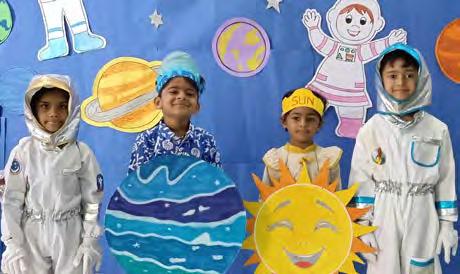
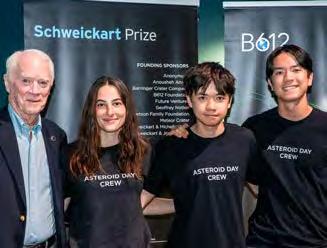
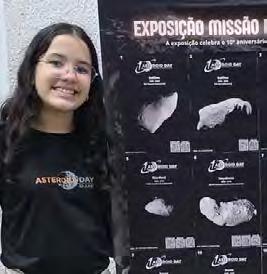

Clockwise from top left: Students at Rahul International School (RIS) in India celebrate Asteroid Day with costumes. Nicole Semião, the youngest person to have an asteroid named in her honor, attends an educational event in Brazil. Cosmonaut Dimitri Dorin Prunariu meets with the public alongside Asteroid Foundation board member Razvan-Petru Radu. Apollo Astronaut Rusty Schweickart gathers with interns for the Schweickart Prize ceremony at Lowell Observatory.
The progress humanity has made since then has been significant. Planetary defense and asteroid science have moved from the margins to the forefront of space policy. Private businesses are pushing the boundaries of rapid access to asteroid knowledge, and space agencies worldwide have made major investments in asteroid missions like NASA’s DART and ESA’s Hera.
Public engagement has also soared. Pew Research Center surveys in 2018 and 2023 ranked monitoring asteroids as NASA’s top priority for Americans. Another major milestone was the introduction this year of a U.S. Senate resolution designating June 30 as Asteroid Day in the United States, spearheaded by former astronaut and Senator Mark Kelly (DAZ) and Senator John Cornyn (R-TX).
In 2017, I helped establish the Luxembourg-based Asteroid Foundation, with the support of the Luxembourg government, which today inspires independently organized Asteroid Day events worldwide. In Luxembourg, the local program has grown into multi-day events that bring astronauts into schools and classrooms. Over the years, B612 supported events at Lowell Observatory, Meteor Crater, California Academy of Sciences, Chabot Space and Science Center, Perot Museum, and many other US-based educational institutions.
I want to express my gratitude to Danica Remy for welcoming me as a volunteer and entrusting me with significant responsibilities over three years while organising Asteroid Day in Luxembourg. This was a stepping-stone in my career as a scientist.
PHILIPPINE GRIVEAUD
PHD, UNIVERSITÉ CÔTE D’AZUR
ASTEROID DAY INTERN 2017, 2018, 2019
Looking back, I’m grateful to the educators, students, scientists, engineers, philanthropists, and private companies worldwide who have helped advance humanity’s understanding of the risks and opportunities that asteroids present.
About Danica
As President of the B612 Foundation, Danica spearheads the organization’s strategy and operations. She is also a cofounder of Asteroid Day, a United Nationssanctioned day for education and awareness. A highly respected Silicon Valley executive, she has a track record of successfully leading startups, companies, and non-profits across diverse fields, including technology, internet services, education, and philanthropy.
PUBLIC ENGAGEMENT
In addition to presenting our research at scientific conferences, we share our mission with the broader public across a wide range of settings. From museums and observatories to podcasts and community events, our team adapts its communication to meet audiences where they are—making asteroid science and discovery accessible to all.
Dr. Ed Lu
EXPLORATORIUM AFTER DARK
Speaking at the Exploratorium’s After Dark event, Dr. Ed Lu highlighted the surge in space activity and underscored the importance of building a comprehensive solar system map to navigate both opportunities and risks.

December

April
Kathleen Kiker
ASTRONOMY
ON TAP
At Seattle’s Astronomy on Tap, Asteroid Institute engineer Kathleen Kiker presented research on asteroid 2024 YR4, briefly classified as hazardous in 2025, highlighting how rapid analysis tools aid risk assessment and response.

Scott Manley ROCKSTARS
During Asteroid Day programming at Meteor Crater Natural Landmark in Arizona, B612 Strategic Advisor and astronomer Scott Manley captivated audiences with stories of asteroids named after rock stars orbiting our Sun, while also sharing updates on the Asteroid Institute’s discovery efforts.
June
Rusty Schweickart STAR STUFF PODCAST
On Lowell Observatory’s Star Stuff podcast, Apollo astronaut Rusty Schweickart reflected on spaceflight and stressed the need to detect and deflect asteroids, citing the Schweickart Prize’s role in raising awareness and inspiring future defenders.
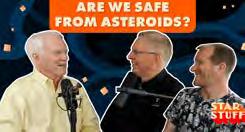
Danica Remy + Delphine Veronese-Milin, CHABOT SPACE AND SCIENCE CENTER
B612’s Delphine Veronese-Milin and Danica Remy connected with families at the Chabot Space and Science Center during Space Week festivities. Children enjoyed hands-on activities featuring our astronaut cofounders, while parents learned about current efforts to find and track asteroids.

AugustOctober
Dr. Ed Lu METEOR CRATER, ARIZONA
At Meteor Crater, B612 was joined by astronaut Nicole Stott and other guests for an educational visit, where Dr. Ed Lu introduced the ADAM Platform, highlighting its opensource tools for analyzing astronomical datasets at scale.

OUR COMMUNITY IN ACTION
From interns to prize winners, our former community members are growing as scientists, engineers, writers, and leaders—building on lessons and inspiration from their time with B612 and the Asteroid Institute. Through the Schweickart Prize, internships, fellowships, and volunteer programs, we’ve seeded a network of rising professionals whose early experiences here spark lifelong innovation in space and STEM.



Phillipine Griveaud
2017–2019 Asteroid Day Intern
While studying physics at the University of Luxembourg, Philippine interned with Asteroid Day for three years. Inspired, she pursued her M.S. and Ph.D. in Astrophysics at the Observatory of the Côte d’Azur, completing her doctorate in 2024 on solar system formation. Now a postdoctoral fellow at the Max Planck Institute for Astronomy, she continues her research while inspiring young women in science.
Manuel Bäuerle
2016 B612 Intern
At just 16 years old, Manuel left his hometown of Gaienhofen, Germany, in 2016 to complete a three-month internship with B612’s software engineers. The following year, he returned to support Asteroid Day events in Luxembourg. Today, after earning his B.S. in Aerospace Engineering from the University of Stuttgart, he develops electrical subsystems for industrial and space-based applications.
Joelle Byars
2019 B612 Intern
After completing her BA in 2019, Joelle joined B612 as a volunteer to support Asteroid Day events in Luxembourg. Her creativity and attention to detail quickly made her an integral part of the team, and led to a permanent event production, communications, and operations role. In addition, she is completing her Ph.D. in English Language and Literature at Morgan State University.
Joe DeMartini
2024 Schweickart Prize Winner

In 2024, Joseph (Joe) DeMartini stood under the dome of the Chabot Space & Science Center planetarium to accept the first-ever Schweickart Prize. His winning proposal, The Sunward NEO Surveillance and Early Twilight Detection (SUNSET) Collaboration, tackled one of the toughest challenges in asteroid detection—spotting objects hidden in the glare of the Sun. But what set Joe apart wasn’t only the idea, it was the passion and persistence behind it.
That drive carried him through years of doctoral research at the University of Maryland, where he explored everything from simulating asteroid surfaces to modeling granular dynamics, focusing particularly on the asteroid Apophis. In July 2025, he successfully defended his Ph.D., and almost immediately landed what he calls his dream opportunity. Joe is now headed to Helsinki, Finland, to join Dr. Mikael Granvik’s world-class research group, where he will help shape the next generation of asteroid population models.
In science, they say we stand on the shoulders of giants, but we only rise to those heights with the support of the folks who lift us up along the way.
JOE DEMARTINI, POSTDOCTORAL RESEARCHER, UNIVERSITY OF HELSINKI
For Joe, the Schweickart Prize marked a turning point: recognition at a critical stage and encouragement to keep pushing forward. As he begins this new chapter abroad, he carries with him the lessons of mentorship and learning that shaped his own path— and a commitment to pass that same inspiration on to the next generation of scientists.
STRATEGIC PARTNERS
B612 pursues strategic partnerships with leading scientific institutions, observatories, and technology companies to advance our mission. Together, these collaborations contribute expertise and resources that strengthen the development of ADAM, broaden public education, and raise global awareness of asteroids.
Through this network, we foster an ecosystem where shared knowledge drives innovation, sparks new solutions, and accelerates progress in asteroid science and discovery.

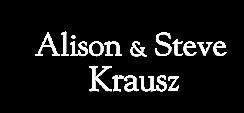

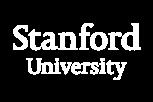







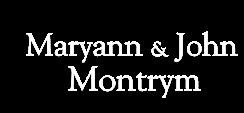



MEDIA COVERAGE
We engage and respond to respected media outlets to share our mission and expand public awareness. Through the press, we leverage the power of storytelling, sciencefocused journalism, and multimedia content to highlight the importance of asteroid discovery, tracking, and planetary defense.
Working with media outlets allows us to connect with a broad range of people, fostering public engagement and discussion.









JULY 1, 2025

Aviation Week’s Aerospace Daily & Defense Report covered this year’s Schweickart Prize, awarded to four students from the U.K., France, Japan, and Egypt for their proposal to establish a Panel on Asteroid Orbit Alteration (PAOA). The article highlights how this year’s proposal provided a forward-looking plan that addresses an emerging planetary defense challenge and underscores the role of B612’s Schweickart Prize in fostering actionable ideas for safeguarding Earth.

FOUNDING CIRCLE
ANONYMOUS**
ANONYMOUS x 6
Bill and Valerie Anders
Geoffrey Baehr
William K. Bowes, Jr. Foundation**
Brian Burton and James Mercer, Broken Bells
Don Carlson
Vinton and Sigrid Cerf
Y(LMC) and Dr. Clark Chapman
Emily and David Corrigan
Asa Denton
Esther Dyson
Alan Eustace
Sasha Galitsky
Eliot Gillum
*Leadership Circle
**Leadership Circle (sustaining)
Glaser Progress Foundation
Dane Glasgow
Steve and Julie Grimm
Garrett Gruener and Amy Slater
VK Hsu & Sons Foundation Ltd.
James D. and Justin Jameson
Margaret Jonsson Family Foundation
Steve Jurvetson*
Dominik Kaiser
Alison and Steve Krausz**
Vladas Lašas
James Leszczenski
David Liddle and Ruthann Quindlen
Suzanna Mak
Greg McAdoo
Laurie Girand and Scott McGregor**

ASTEROID CIRCLE
Maryann and John Montrym**
Matt Mullenweg
Diane Murphy
Peter Norvig
Shervin Pishevar
Peggy Rawls Family Fund
Ray Rothrock
Edwin Sahakian
Rusty Schweickart and Nancy Ramsey
Tim Trueman
Robert C. and Fallon B. Vaughn
Matthew and Sarah Welty
Ben Wheeler
Yishan Wong and Kimberly Algeri-Wong
Matt Wyndowe
ANONYMOUS x 2
Rick and Mary Armstrong
Barringer Crater Company
Rodney Brooks
Jim Chervenak
Explorers Club
FM Family Fund
Lynn and Anisya Fritz
Arthur Gleckler and Kristine Kelly
Jensen Huang
Jed McCaleb & Seemay Chou
Jonathan Nagin
Peter and Cathleen Schwartz
Hal Varian
Tito’s Handmade Vodka**
Al Werner
Pictured at Meteor Crater in Arizona, September 2024: (First row, left to right) Holly Kimball, Jack Sharrow, Ted Sharrow, Mary Kate Stimmler, Delphine Veronese-Milin, Colleen Fiaschetti, Jonathan Wald, Mark Lyon, Taghi Amirani, Deniece Lopez, Judy Sulltrop (Second row, from left to right) David Sharrow, Sunil Nagaraj, Ed Lu, Alec Koumjian, Topher Spinnato, Andy Freed, Lauren Freed, Joe DeMartini, Adrienne Hopper, Ryan Burke, Danica Remy
CIRCLE
We have donors from 46 countries.
COMMUNITY OF SUPPORTERS
Gifts $500–$24,999*
Emil Barr
Duncan Beardsley
Michael and Tatiana Blum
Richard Bowen
Ryan Phelan and Stewart Brand
Jane Butcher
Scott and Leslie Case
John Clendenin
John Conery
Sean Devine
George and Janine Cornecelli
Tyler Edwards
Al Ender
Ray Erikson
Robert Epstein and Amy Roth
Claudia Fiaschetti
Frank and Kristine Fiaschetti
*From September 1, 2024, to October 1, 2025
Dennis and Pamela Polite Fisco
Bruce Fitzsimons
Andy and Lauren Freed
Patrick Garvey
Michael Gendler and Jessica Teich
Angela and Jeffrey Glosser
Glenn Griffith and Carrie Cooper
Jeffrey Hungerford
Robert Jasinski and Rebecca Harkness
Joel and Joy Kellman
Kevin Kelly and Germaine Fuh
Aki Korhonen
Pawan Kumar
Michelle and Christopher Levell
Samuel Lichtenstein
Scott and Amy Manley
John Kenneth Menges
Gary Miloglav
Sunil Nagaraj and Mary Kate Stimmler
Dave and Katherine Paul
Drummond Pike
Alida Rincon
Ron and Kirstie Rosano
David and Abby Rumsey
John Platt
Dirk Pranke
Scott Schneider
David Sharrow and Holly Kimball
Stroum Family Foundation
Chris Tellis and Isabella Kirkland
James Utz
Terry Vaskor
James and Katelyn Walker
Rogers Weed
Lawrence Wilkinson
Moorea, French Polynesia
Photo by Ed Lu from the ISS

As one of the earliest supporters of B612, I’m delighted at how far they have come — and where they are going. They’re not just creating new tools; they are also seeing more in old data using new methods.
ESTHER DYSON FOUNDER, INVENTOR, PHILANTHROPIST
BOARD OF DIRECTORS
Peter Schwartz, Chair
Geoffrey Baehr
Dr. Clark Chapman, Cofounder
Garrett Gruener
Dr. Ed Lu, Cofounder
Danica Remy, President
Alida Ricon
Lawrence Wilkinson
ASTEROID INSTITUTE, A PROGRAM OF B612
Dr. Ed Lu, Executive Director
ADAM PROJECT TEAM
Alec Koumjian, Head of Engineering
Kathleen Kiker, Software Engineer
Dr. Joachim Moeyens, Research Engineer
Allan Posner, Engineer and Astrodynamicist
Nate Tellis, Software Engineer
RESEARCH COLLABORATORS
Dr. Marc Buie, Mission Scientist
John Carrico, Astrodynamicist
Dr. Siegfried Eggl, Research Collaborator
Hank Grabowski, Engineer and Astrodynamicist
Dr. Sarah Greenstreet, Senior Researcher
Dr. Scott Hubbard, Mission Strategist
Dr. Mario Juric, Research Collaborator
Emmie King, Software Engineer
Mike Loucks, Astrodynamicist
Samira Motiwala, Astrodynamicist
Dr. Harold Reitsema, Mission Director
Jeff Rothermel, Avionics Engineer
Dr. Sam Waldman, Avionics Engineer
Dr. Vivek Vittaldev, Mission Researcher
B612 FOUNDATION
Danica Remy, President
Joelle Byars, Finance & Operations Associate
Colleen Fiaschetti, Director of Special Projects
Merel Kennedy, Graphic Design
Delphine Veronese-Milin, Science & Operations Associate
ASTEROID DAY, A PROGRAM OF B612
Dr. Brian May, Cofounder, United Kingdom
Danica Remy, Cofounder, California, USA
Grig Richters, Cofounder, Germany
Rusty Schweickart, Cofounder, California, USA
www.b612.ai www.b612foundation.org
Cover: Moonset on the Terminator
Photo by Ed Lu from the ISS
